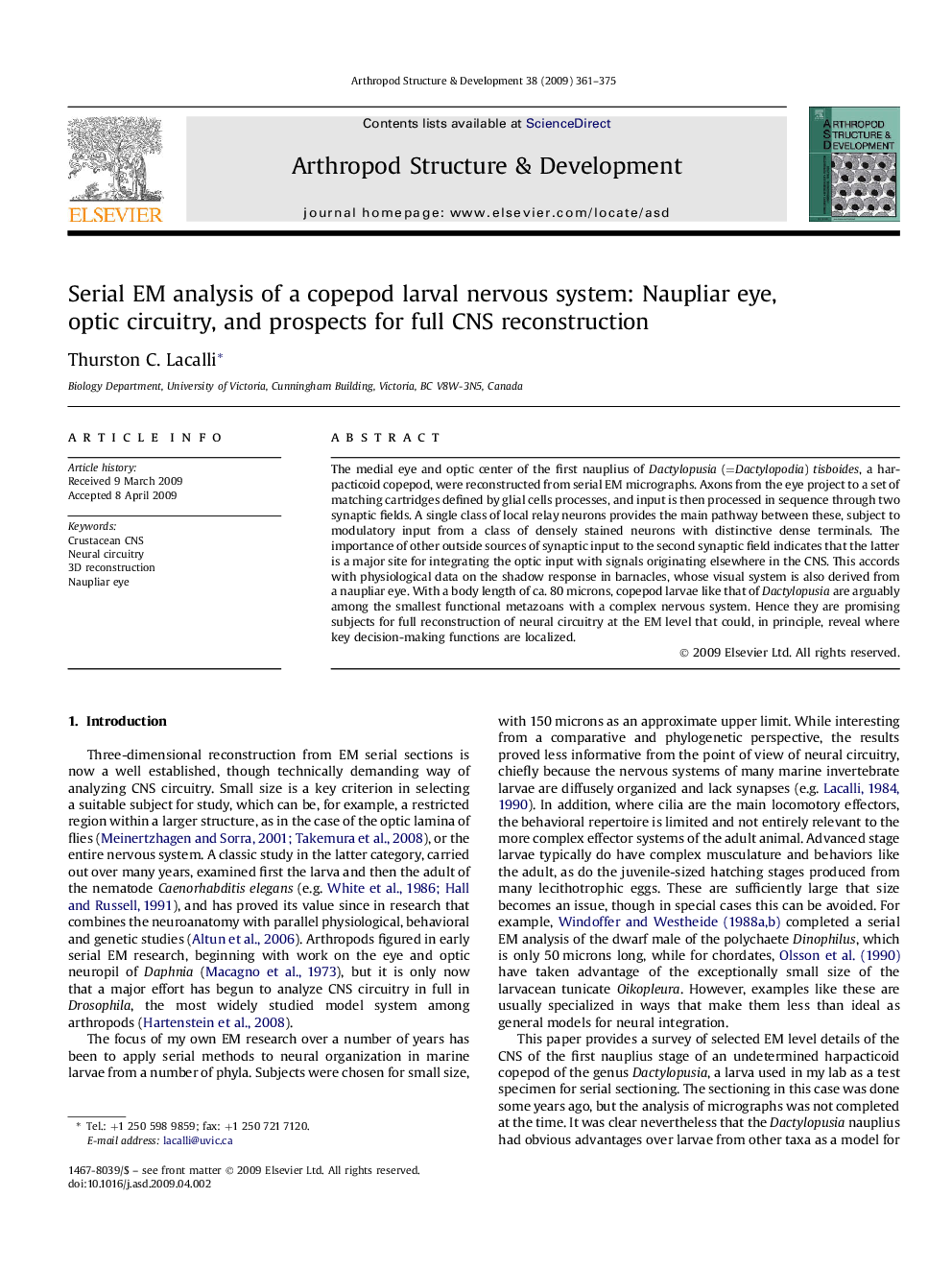| Article ID | Journal | Published Year | Pages | File Type |
|---|---|---|---|---|
| 2778870 | Arthropod Structure & Development | 2009 | 15 Pages |
The medial eye and optic center of the first nauplius of Dactylopusia (=Dactylopodia) tisboides, a harpacticoid copepod, were reconstructed from serial EM micrographs. Axons from the eye project to a set of matching cartridges defined by glial cells processes, and input is then processed in sequence through two synaptic fields. A single class of local relay neurons provides the main pathway between these, subject to modulatory input from a class of densely stained neurons with distinctive dense terminals. The importance of other outside sources of synaptic input to the second synaptic field indicates that the latter is a major site for integrating the optic input with signals originating elsewhere in the CNS. This accords with physiological data on the shadow response in barnacles, whose visual system is also derived from a naupliar eye. With a body length of ca. 80 microns, copepod larvae like that of Dactylopusia are arguably among the smallest functional metazoans with a complex nervous system. Hence they are promising subjects for full reconstruction of neural circuitry at the EM level that could, in principle, reveal where key decision-making functions are localized.
